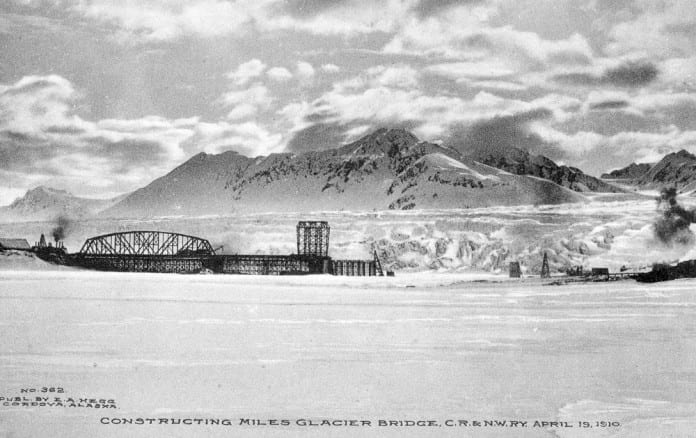
Miles Glacier Bridge was the world’s first example of arctic engineering. The techniques for setting the foundations and steelwork for the bridge became standards for future arctic construction. Work started March 1909 and E.C. Hawkins, engineer for the CRNWR kept it on schedule constantly reviewing the design for the tracks and structures. The piers and abutments were completed late in 1909; steel for the spans arrived in March 1910. Work continued throughout a snowy, wet April and May, with the men working round the clock to beat the rapidly breaking river ice literally finishing with minutes to spare. By June of 1910 the hard-working crews had completed the final fourth span of this engineering feat. The bridge was in full service transporting supplies further north by July 1910. Now known as the Million Dollar Bridge, it actually cost $1,424,774.
This photo came from the archives and collections of the Cordova Historical Society.













